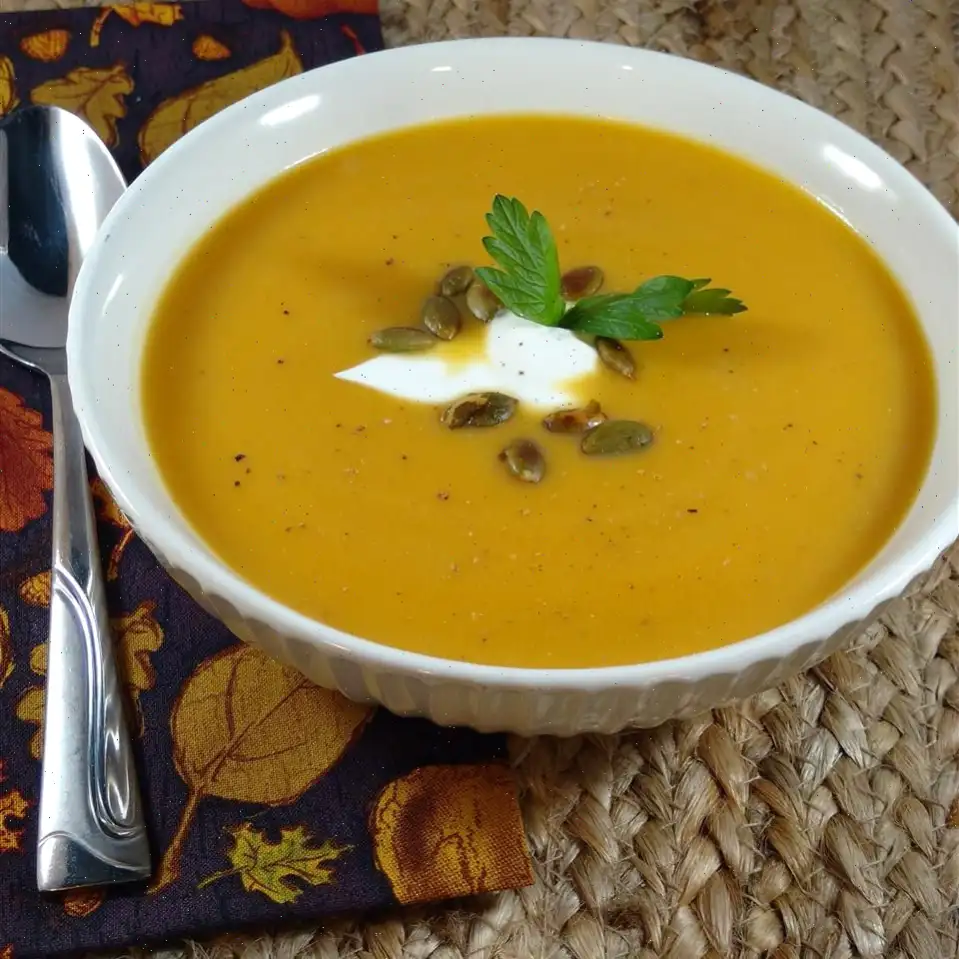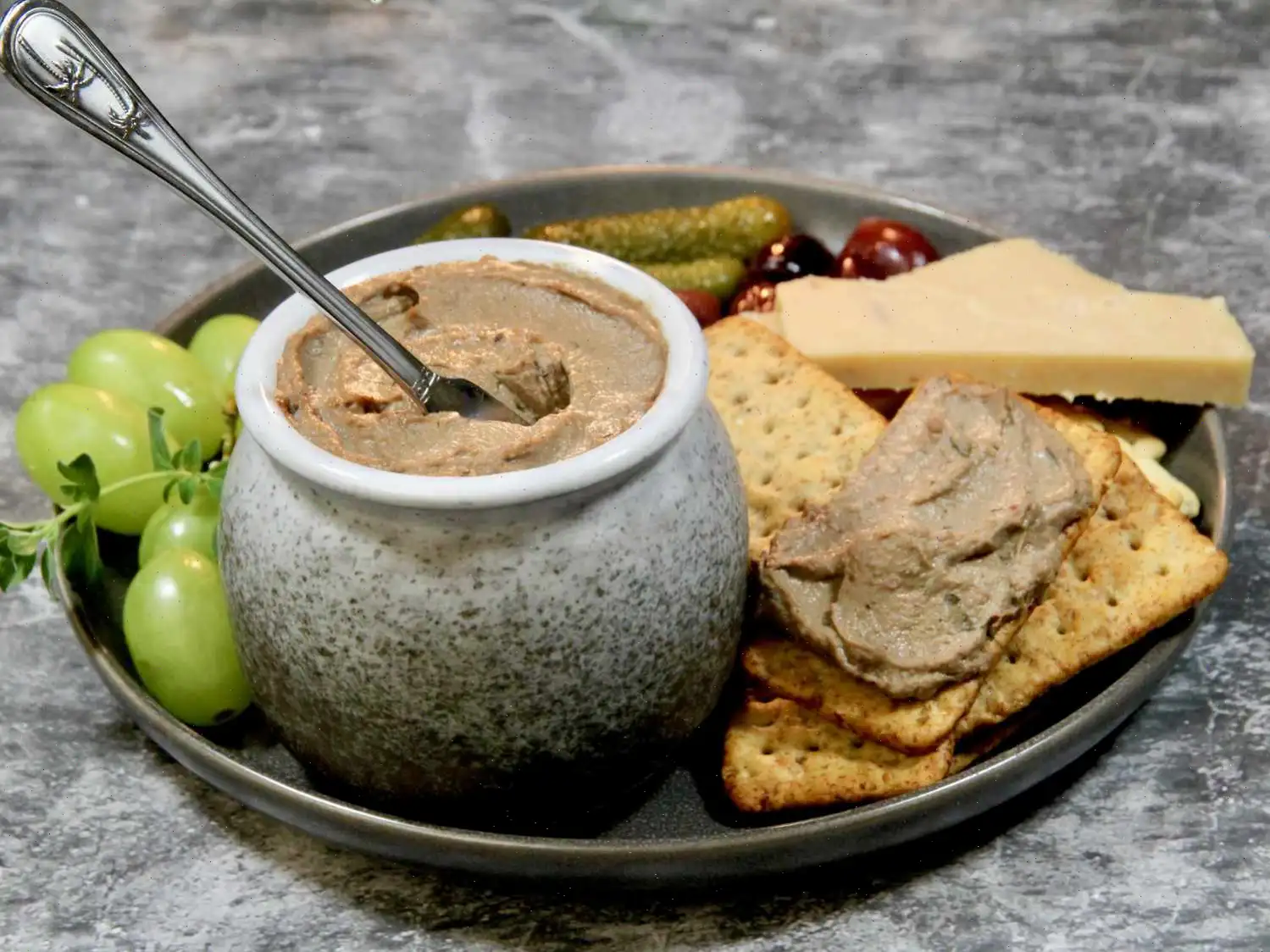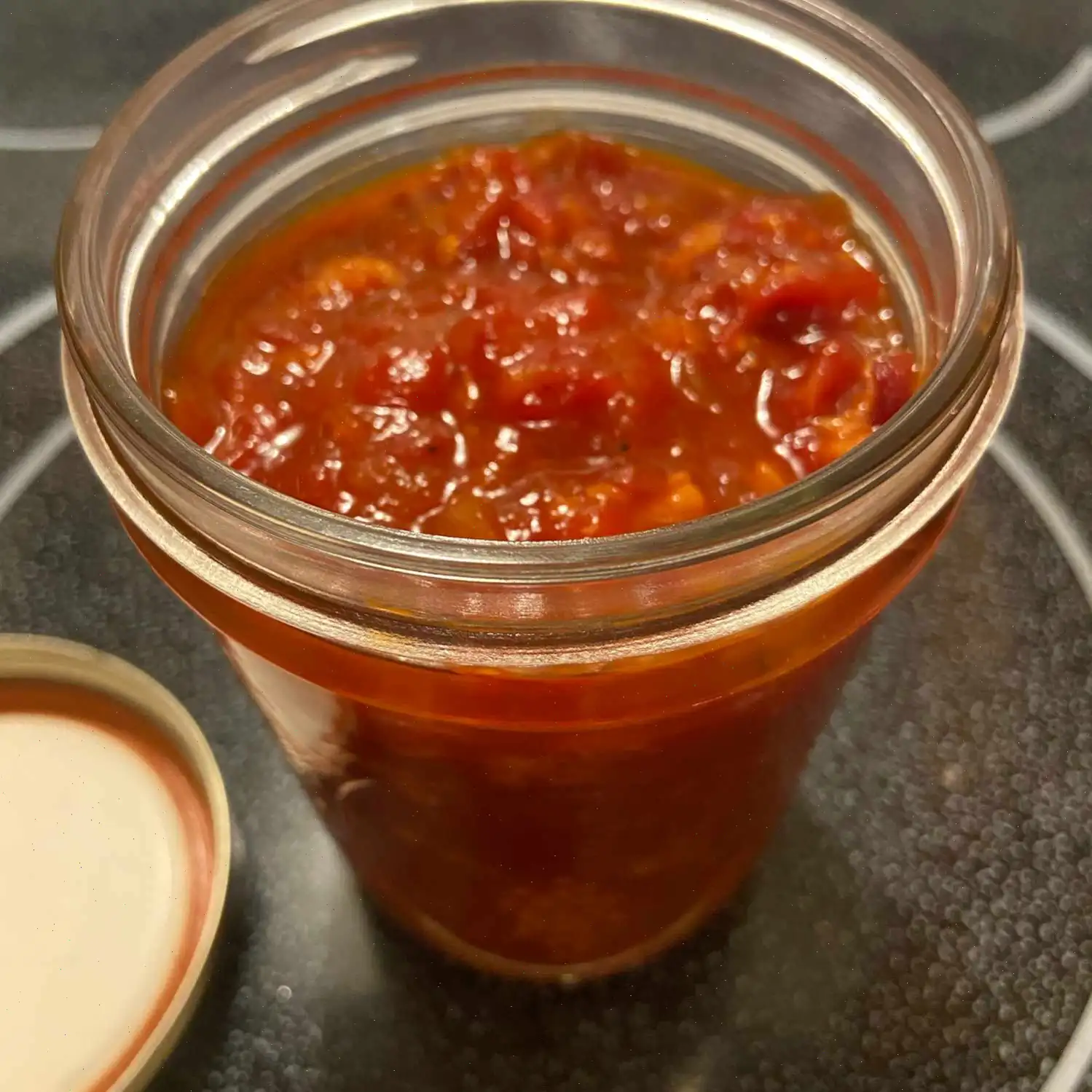
Butternut Squash and Apple Cider Soup Recipe
Butternut Squash and Apple Soup
This delicious and creamy soup combines the earthy sweetness of butternut squash with the refreshing taste of apple cider, making it a perfect choice for a cozy meal.
Ingredients
- 2 tablespoons butter
- 1 onion, diced
- 1 butternut squash, peeled, seeded, and cut into large chunks
- 2 white potatoes, peeled and chopped
- 2 stalks celery, chopped
- 1 apple, peeled and chopped
- 1 large carrot, peeled and diced
- 2 (14 ounce) cans chicken broth
- gallon apple cider
- cup half-and-half cream
- teaspoon ground cinnamon
- teaspoon ground cloves
- cup sour cream, or as needed
- 1 pinch ground nutmeg, or to taste
Directions
Step 1: In a large pot, heat butter over medium heat. Add the diced onion and cook, stirring occasionally, until it becomes translucent (about 5 to 10 minutes).
Step 2: Add the butternut squash, potatoes, celery, apple, and carrot to the pot. Pour in enough apple cider to cover the vegetables and add the chicken broth.
Step 3: Bring the mixture to a boil, then cover the pot. Reduce the heat and let it simmer. Add more apple cider as needed during the cooking process. Continue to simmer for 35 to 40 minutes, or until the vegetables are tender.
Step 4: Once the vegetables are cooked through, use an immersion blender to blend the mixture until smooth and creamy.
Step 5: Stir in the half-and-half cream, ground cinnamon, and ground cloves. Simmer the soup for another 5 to 10 minutes, allowing all flavors to meld together and the soup to heat through.
Step 6: Spoon the soup into serving bowls. Top each bowl with approximately 1 tablespoon of sour cream and a pinch of ground nutmeg for extra flavor.
Nutrition Facts (per serving)
- Calories: 345
- Fat: 9g (12% Daily Value)
- Saturated Fat: 5g (27% Daily Value)
- Cholesterol: 25mg (8% Daily Value)
- Sodium: 558mg (24% Daily Value)
- Carbohydrates: 64g (23% Daily Value)
- Dietary Fiber: 5g (18% Daily Value)
- Total Sugars: 35g
- Protein: 4g (9% Daily Value)
- Vitamin C: 40mg (45% Daily Value)
- Calcium: 122mg (9% Daily Value)
- Iron: 2mg (8% Daily Value)
- Potassium: 820mg (17% Daily Value)
* Percent Daily Values are based on a 2,000-calorie diet. Your daily values may vary depending on your calorie needs.

History of the Dish
The origin of the Butternut Squash and Apple Cider Soup can be traced back to North America, where butternut squash is a native vegetable. This rich, creamy soup combines the flavors of roasted squash with the sweetness of apple cider, both of which are staples in autumn cuisine. The dish's popularity surged in the fall months when people sought hearty, warming meals to enjoy during cooler weather. The use of apple cider in the recipe is reflective of traditional American autumn dishes, which often highlight the seasonal harvest of apples.
Regional Variations
This soup is widely enjoyed across the United States, particularly in regions where both butternut squash and apples are abundant. In New England, where apple cider is especially popular, this soup is a favorite dish during the harvest season. While the basic recipe remains consistent, some variations exist in how the soup is seasoned. In some versions, additional spices such as ginger or nutmeg may be added to create a more complex flavor profile, reflecting the diverse culinary traditions in different regions. Additionally, some regions may add roasted pumpkin or other root vegetables to enrich the soup's texture and flavor.
How It Differs from Similar Dishes
While butternut squash soup is a classic comfort food, the addition of apple cider distinguishes this recipe from more traditional variations. Most butternut squash soups rely on a base of cream, broth, or stock, but apple cider infuses a delightful sweetness and a bit of tang that gives the soup a unique flavor. Compared to other squash soups, which might focus on savory ingredients like onions and garlic, this version offers a subtly sweet and fruity contrast, which makes it perfect for fall and Thanksgiving celebrations. The balance between the creamy squash and the bright apple cider is what sets it apart from other vegetable soups, giving it a distinctive, seasonal character.
Where It's Typically Served
Butternut Squash and Apple Cider Soup is commonly served in many American homes during the colder months, particularly at Thanksgiving or autumn gatherings. It can be an appetizer at a festive dinner or a light main course for lunch. This soup is also found at farmers' markets and restaurants that specialize in seasonal and local ingredients. Given its rich, creamy texture and comforting flavors, its a popular choice at cafes and bistros that offer fall-inspired menus. In some upscale restaurants, it may be paired with a crisp apple salad or served alongside roasted meats such as turkey or pork.
Interesting Facts
Butternut squash, the key ingredient in this soup, is not only delicious but also packed with nutrients. It's an excellent source of vitamin A, which promotes healthy vision, and is rich in dietary fiber, making it a healthy choice for digestive health. Apple cider, another major ingredient, is a natural source of antioxidants, which can help boost immunity. In fact, both ingredients are often celebrated for their health benefits in traditional folk medicine. Historically, apple cider was used as a remedy for digestive issues, and squash was believed to have various medicinal properties, including aiding in weight loss and improving skin health.
Conclusion
The Butternut Squash and Apple Cider Soup is a delightful dish that brings together the best flavors of fall. With its rich, velvety texture and the perfect balance of sweet and savory notes, this soup is a seasonal favorite that showcases the best of autumns harvest. Whether served at a family dinner or as part of a festive meal, its sure to warm the hearts and bellies of those who enjoy it.








